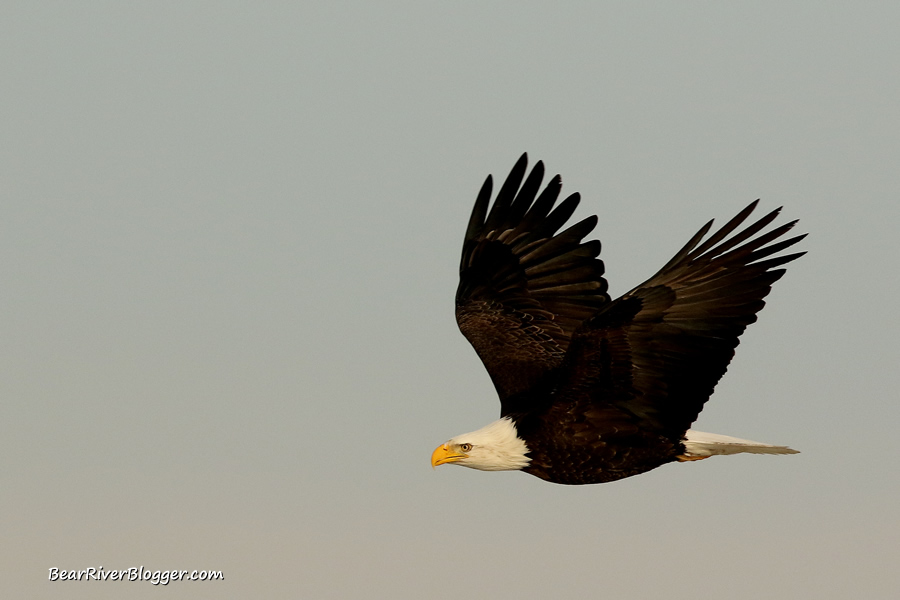As a bird watcher and photographer, I look forward to the changing of the seasons. With each monthly flip of the calendar, new birding opportunities arise for anyone who’s willing to get out and search for what nature has to offer.
Winter is a time when some birders put away their binoculars and checklists for the season, but not me. I believe it’s a time of year when we should be polishing the spotting scope, bundling up to brave the snow, heading out to our favorite birding spots, and search with great anticipation and excitement for some of our most revered feathered friends to arrive.
It’s a time of year, the only time of year, in fact, when some migratory birds can actually be seen here in Utah. Winter is a time for, well…, a time for bald eagles.
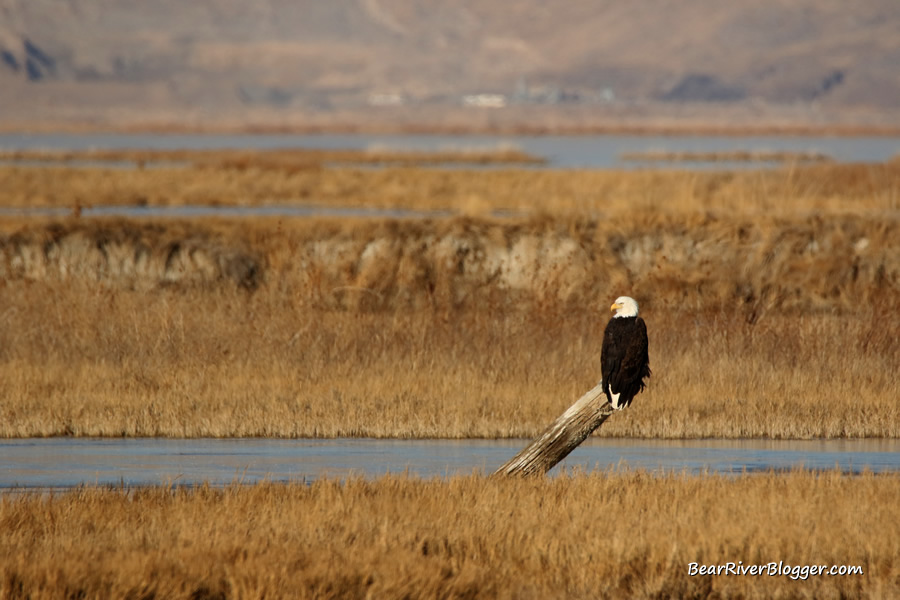
As fall fades into winter, bald eagles leave their summer breeding grounds in Canada and Alaska and migrate south to warmer climates. Hundreds of those bald eagles, in fact, end up here and can be seen wintering in many locations all over Utah, oftentimes starting in early November.
What does a bald eagle eat?
Much of a bald eagle’s diet consists of fish and why you find them mostly around bodies of water. When waters freeze or fish are in short supply, bald eagles can adapt and will eat birds, small mammals, reptiles, amphibians, and just about anything else they can catch as food.
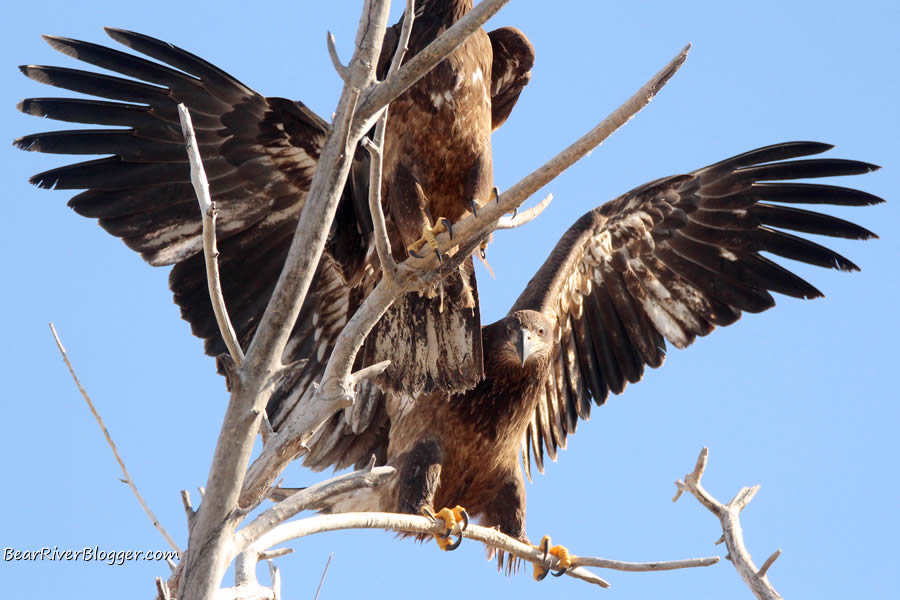
The bald eagle is a masterful and supreme aerial hunter, but they aren’t averse to scavenging and harassing other birds of prey, including other eagles, to steal a quick meal from a competitor.
Where are the bald eagles in Utah?
Bald eagles can be found across the entire state of Utah during winter, but they are more easily found in locations that offer the most available food during this critical time of year.
Some of the more common areas bald eagles can be seen during winter in Utah include Salt Creek WMA, Bear River Migratory Bird Refuge, Farmington Bay, Ouray Wildlife Refuge, Fountain Green State Fish Hatchery, Rush Lake Ranch, and on the Great Salt Lake itself.

Let’s face it, winter is harsh and food is scarce during this time of year for predators. As such, numerous bald eagles will congregate in areas, such as the Bear River Migratory Bird Refuge, for example, which offer the best opportunities to hunt for and even scavenge up a meal.
The Bear River Refuge is an ideal place for wintering bald eagles because of the large population of birds, fish, and small mammals that live on and migrate through the wildlife preserve. Even during the deepest parts of winter, there is always some kind of prey on the refuge for a resourceful and vigilant eagle.
Bald eagles on the Bear River Migratory Bird Refuge
Finding and viewing bald eagles on the Bear River Refuge is actually pretty easy most of the time. I say most of the time, however, because there have been a few times I left the refuge skunked. It hurts to admit that, but fortunately, thank goodness, it doesn’t happen too often.
Occasionally, nature does indeed toss me a big ol’ goose egg in the birding department while visiting the refuge, but more times than not, I come home with something I haven’t seen before.
A case in point was last winter when I was able to witness and photograph an immature bald eagle catching a pied-billed grebe off of the river right in front of me.
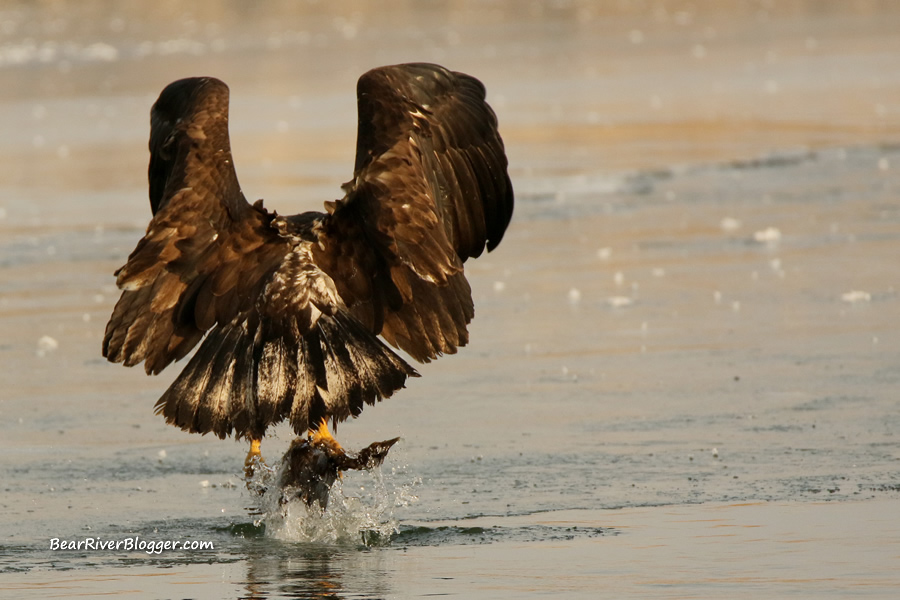
Many of the bald eagles that come to the refuge congregate and stand on the ice around the area of the auto tour route. Others can be seen on the drive down to the auto loop where the main river channel comes close to Forest street in a few different locations.
Come to think of it, I have seen them just about everywhere the public can go on the refuge.
In fact, on my drive around the refuge today, I came across 8 bald eagles on the auto tour loop and 2 on Forest Street, itself. Personally, I find mid-mornings are typically the best time to find eagles on the refuge, but I have seen some at all times of day, however.
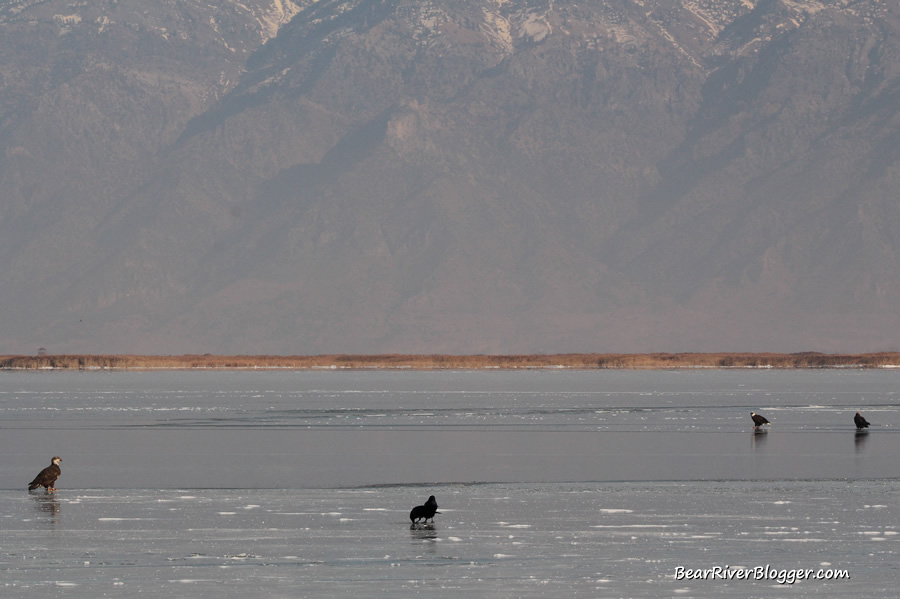
You just never know what to expect with nature, especially with birds, but more times than not, I find the eagles around midday on the auto tour route.
Nesting pair near of bald eagles in Utah
Most bald eagles in North America breed up in Canada and Alaska. Utah does, however, have a small number of active nesting pairs of bald eagles. They are few and far between and most people never get to see them during the summer, but there are some active bald eagle nests around the state.
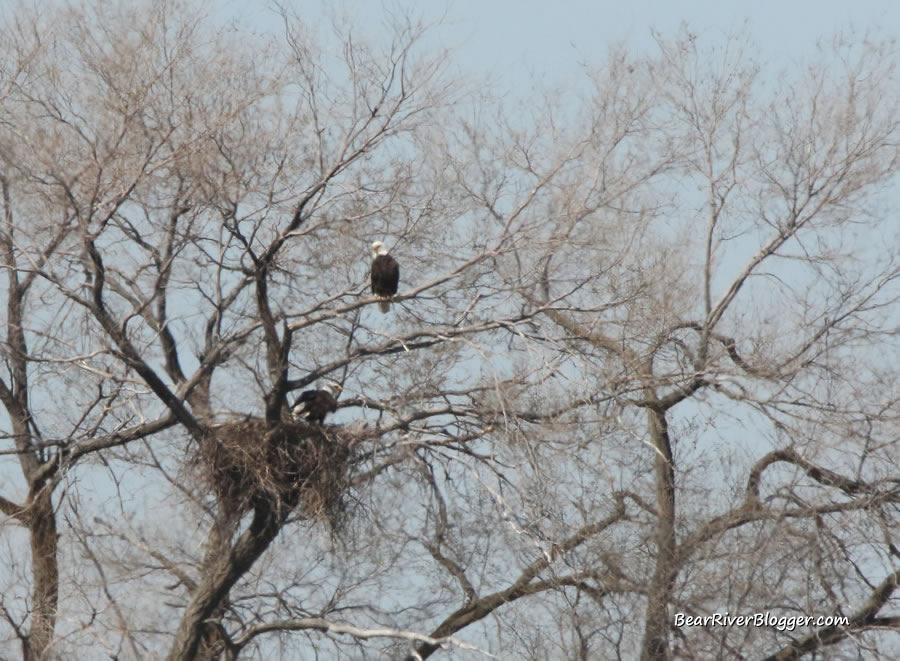
One such nest is in the vicinity of the Bear River Migratory Bird Refuge. The exact location won’t be disclosed at this point, however, but it is on private property near the refuge and has been active for several years now.
This year, in fact, I watched the pair of eagles successfully raise and fledge one eaglet. This is one of three eagle nests I personally know of in Utah, but I am not sure if the other 2 nests are still active or not.
Bald eagle day
If you are interested in learning more about bald eagles, the Bear River Migratory Bird Refuge hosts an annual Bald Eagle Day event in early February. It’s a celebration of our nation’s symbol with a lot of activities for the whole family.
Most years volunteers from the Ogden Nature Center participate in the annual event with a live eagle presentation. Other activities usually include eagle games, hands-on educational activities, movies, and crafts.

February is also when the eagle population in Utah is at its climax and is a great time to visit the auto tour route to see wild eagles out on the refuge.
Check our Bald Eagle Day page closer to February for updated information on the next upcoming event.
Conclusion
Bald eagles are one of those special birds that should put a tingle in our spine anytime we see one. They not only represent our country but these iconic birds also represent the strength of nature when given half a chance to rebound.
Eagles were pushed to the brink of extinction with the use of harmful pesticides. But now they are plentiful once again, and the Bear River Migratory Bird Refuge is a great place to view bald eagles during winter.
They are also a winter resident here in many other parts of Utah, giving us bird watchers a wintertime boost when most other birds have left for the season.
Subscribe to our blog
We appreciate your readership and suggest if you like this blog to head over to our subscription page and sign up for email notifications for future blog posts.
Bird Watching Apparel
If you’re looking for birding related gifts and apparel for someone, take a look at our online store featuring some of our own photographs turned into unique gifts.

As a reader of our blog, we offer you 20% off all products on our store by using the coupon code save20 during checkout.
Visit our Bird Shirts and More online store to check out our products. New products are constantly being added so check back often.

